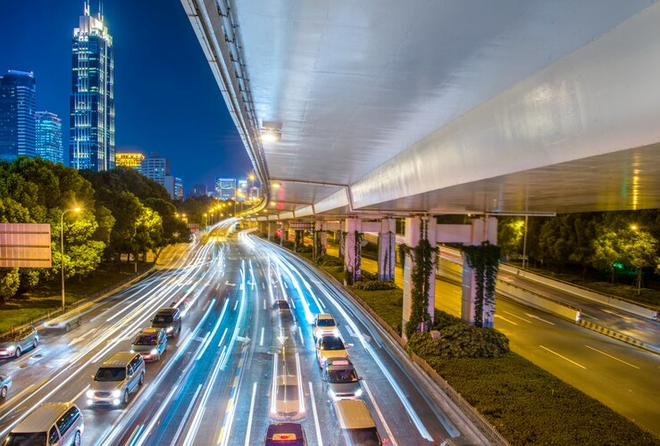Introduction:
The landscape of transportation is undergoing a remarkable transformation driven by rapid technological advancements and shifting societal needs. As urbanization intensifies and environmental concerns grow, cities around the world are seeking innovative solutions to enhance mobility while reducing congestion and emissions. Among these cities, Phoenix emerges as a prominent player, pioneering various initiatives to revolutionize transportation. This essay explores the future of mobility through the lens of Phoenix's innovative endeavors, highlighting key technologies, policies, and initiatives shaping the transportation landscape.
Phoenix's Mobility Challenges:
Before delving into Phoenix's innovative solutions, it's crucial to understand the unique challenges the city faces regarding mobility. Like many metropolitan areas, Phoenix grapples with issues such as traffic congestion, air pollution, inadequate public transit, and urban sprawl. These challenges not only hinder the efficiency of transportation systems but also contribute to environmental degradation and decreased quality of life for residents.
Smart Infrastructure and Connected Mobility:
In response to these challenges, Phoenix is leveraging smart infrastructure and connected mobility solutions to optimize transportation networks. Smart traffic management systems equipped with sensors and AI algorithms enable real-time monitoring of traffic flow, allowing for dynamic adjustments to signal timings and lane assignments. This proactive approach reduces congestion, improves traffic flow, and enhances overall safety on city roads.
Furthermore, Phoenix is embracing connected mobility technologies, including vehicle-to-infrastructure (V2I) and vehicle-to-vehicle (V2V) communication systems. These technologies enable seamless integration between vehicles and infrastructure, facilitating the exchange of data to optimize routes, enhance safety features, and enable autonomous driving capabilities. By fostering a connected transportation ecosystem, Phoenix aims to improve efficiency, reduce accidents, and pave the way for autonomous vehicle deployment.
Electrification and Sustainable Transportation:
Another cornerstone of Phoenix's transportation innovation strategy is the promotion of electrification and sustainable transportation alternatives. Recognizing the detrimental impact of fossil fuel emissions on air quality and public health, the city is prioritizing the electrification of public transit fleets and incentivizing the adoption of electric vehicles (EVs) among residents and businesses.
Through strategic partnerships with automakers and public transit agencies, Phoenix is expanding EV charging infrastructure and subsidizing the purchase of electric buses and cars. Moreover, the city is exploring innovative solutions such as electric micro-mobility options like e-scooters and e-bikes to provide residents with convenient and eco-friendly transportation choices for short-distance trips.
Policy and Regulatory Framework:
In tandem with technological innovations, Phoenix is implementing forward-thinking policies and regulatory frameworks to support the transition to a more sustainable and efficient transportation system. This includes zoning regulations that promote mixed-use development and transit-oriented design to reduce reliance on private vehicles and encourage walking, cycling, and the use of public transit.
Furthermore, Phoenix is exploring congestion pricing mechanisms and road usage charges to manage traffic congestion and fund transportation infrastructure upgrades. By aligning incentives with desired outcomes, these policies aim to incentivize mode shifting towards more sustainable transportation options while generating revenue for infrastructure investment.
Public-Private Partnerships and Collaboration:
Crucially, Phoenix recognizes the importance of collaboration between the public and private sectors in driving transportation innovation forward. By fostering partnerships with technology companies, automakers, academia, and community stakeholders, the city is able to leverage diverse expertise and resources to address complex mobility challenges effectively.
These partnerships facilitate the co-creation of innovative solutions, pilot projects, and research initiatives aimed at advancing transportation technologies and practices. From shared mobility services to data-sharing agreements, Phoenix is embracing collaborative approaches to shape the future of mobility in the region and beyond.
Conclusion:
In conclusion, the future of mobility in Phoenix is characterized by innovation, sustainability, and collaboration. Through smart infrastructure investments, electrification efforts, progressive policies, and strategic partnerships, the city is laying the foundation for a more efficient, equitable, and environmentally friendly transportation in phoenix system. By embracing emerging technologies and prioritizing the needs of its residents, Phoenix is poised to lead the way towards a more connected, accessible, and sustainable urban future.
In this essay, we have explored the multifaceted approach taken by Phoenix to address its mobility challenges and drive transportation innovation. From smart infrastructure to sustainable transportation alternatives, the city's initiatives exemplify a holistic and forward-thinking approach to mobility planning and management. As other cities grapple with similar challenges, Phoenix serves as a beacon of inspiration and a testament to the transformative power of innovation and collaboration in shaping the future of transportation.





Comments